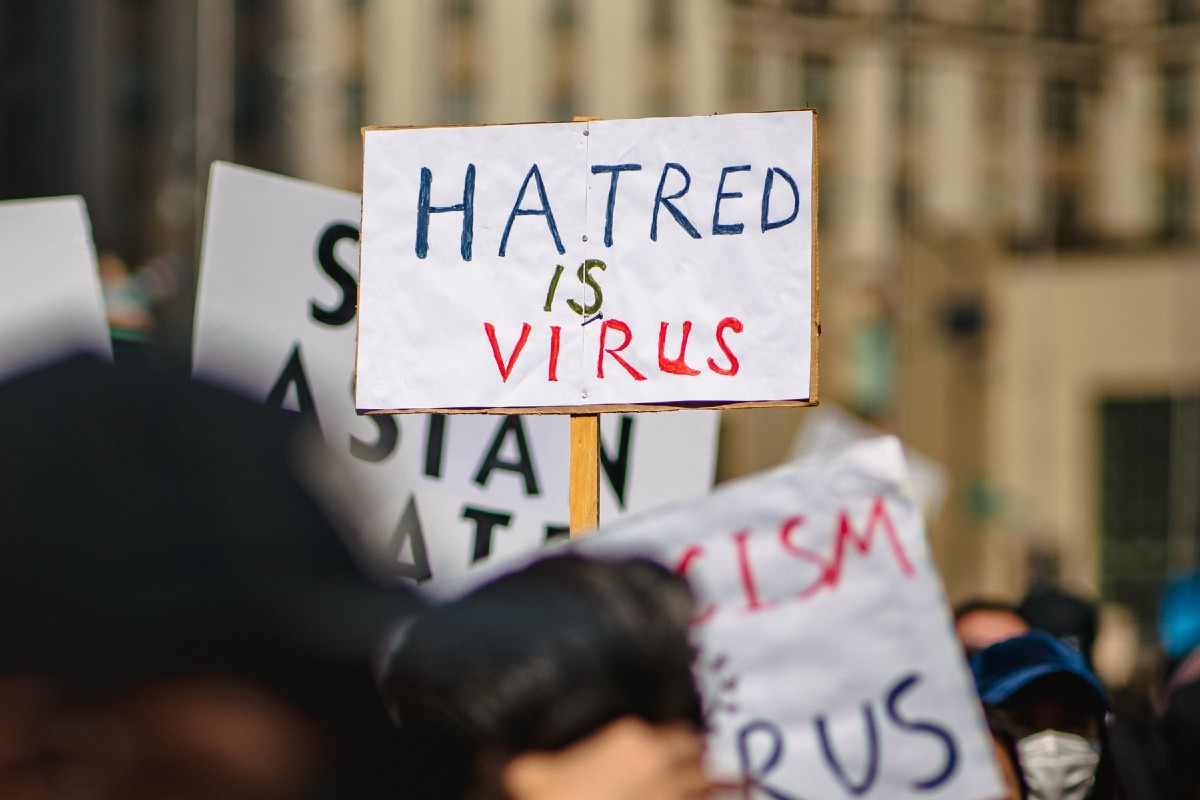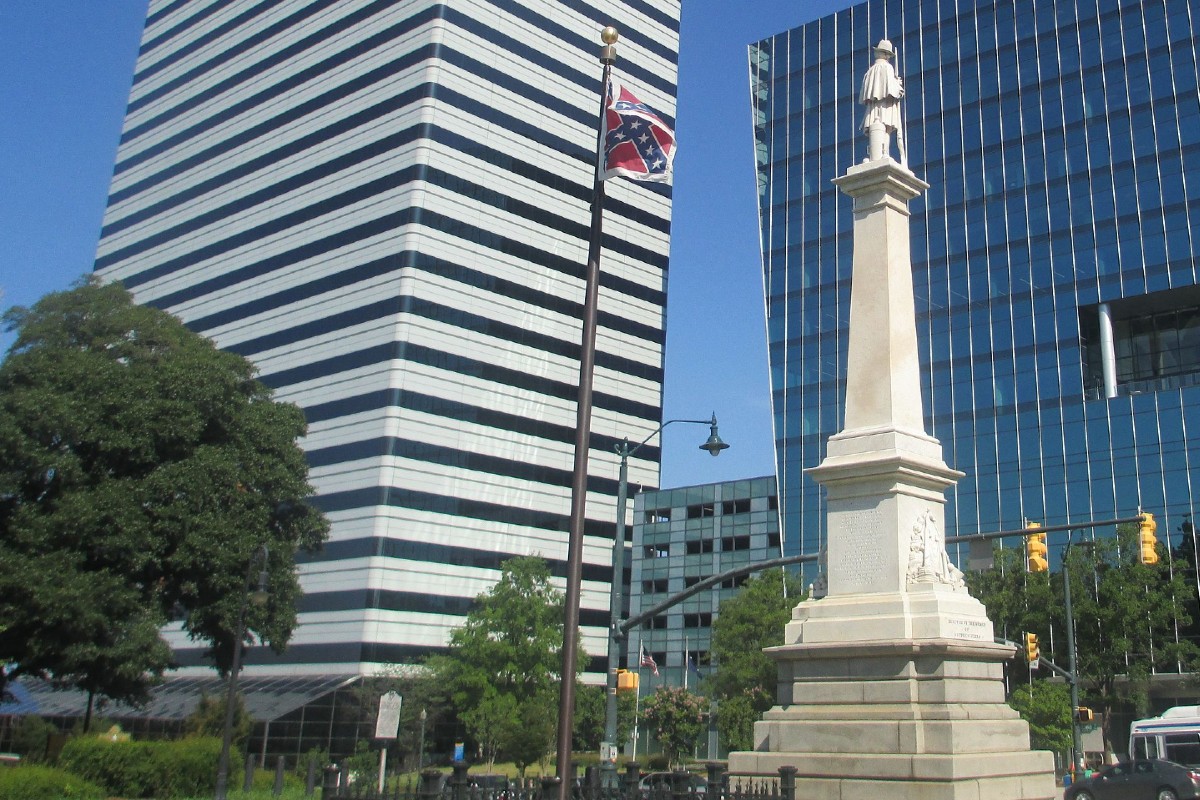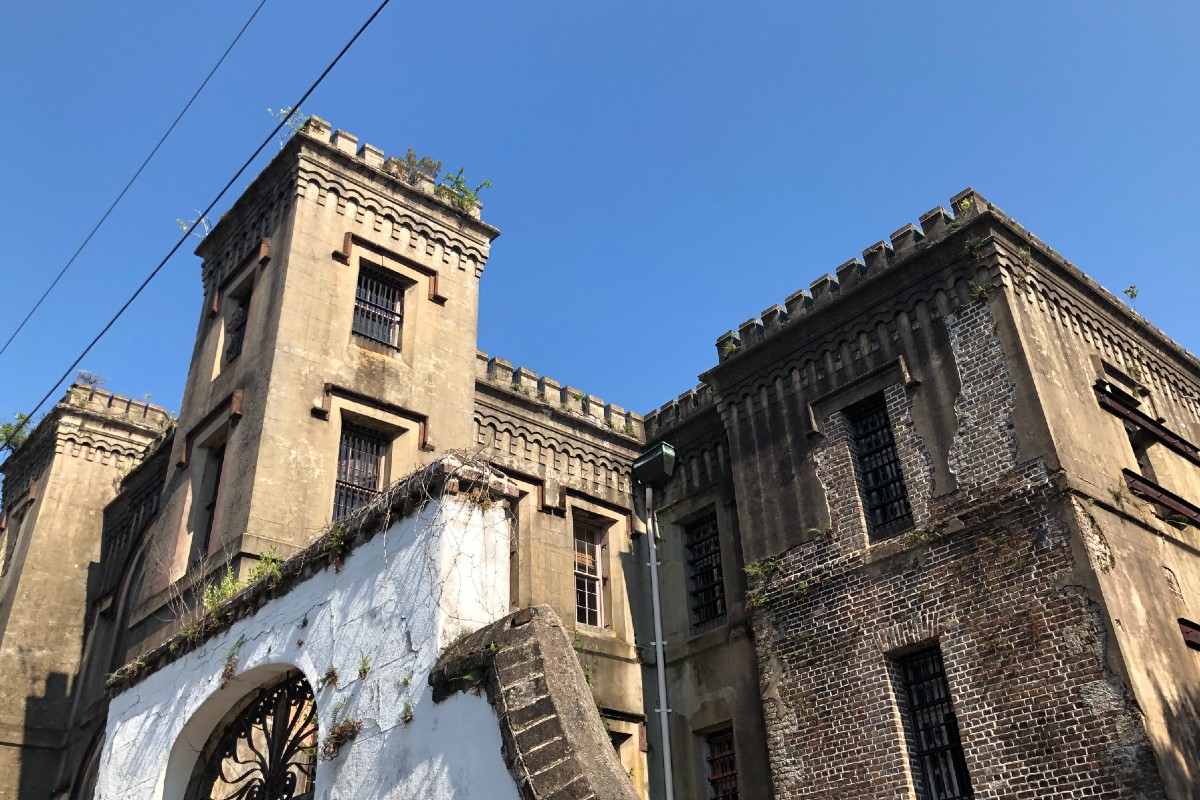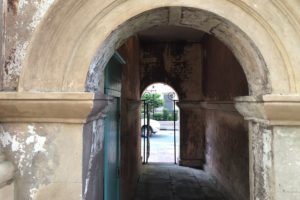STATEHOUSE REPORT | ISSUE 20.22 | MAY 28, 2021
BIG STORY: State schedules first execution in decade under new law
NEWS BRIEFS: Hate crimes bill gets boost from Richland sheriff
LOWCOUNTRY, Ariail: The signs are everywhere
COMMENTARY, Brack: Throw out the Heritage Act
SPOTLIGHT: S.C. Clips
FEEDBACK: Use opioid funds carefully, transparently
MYSTERY PHOTO: Not the Citadel (again)
State schedules first execution in decade under new law

Staff reports | An inmate on South Carolina’s death row since 2002 who is suing the state over a new death penalty law has been issued an execution notice from the S.C. Supreme Court. The execution should be carried out on June 18.
“By law, the execution date is set four Fridays after the execution order is received,” said Chrysti Shain, director of communications for the state Department of Corrections spokesman said today.
Earlier this month, Gov. Henry McMaster signed into law a measure that set the electric chair as the default mode of execution for those on death row, although inmates can choose death by firing squad.
At present, only electrocution is available as the state is developing the policies and procedures to create a firing squad, Shain said, adding, “This is a very serious thing and we want to make sure we are doing it properly and constitutionally.”
The new law unlocked stalled executions because in the earlier law, death row inmates had to pick between electrocution and lethal injection. But because the lethal injection drugs are not available and inmates chose that alternative, executions ground to a halt for a decade. The new measure sets electrocution as the default, with the firing squad as the alternative.
On Thursday, the high court issued the execution notice, the first since 2011, that directed the S.C. Department of Corrections to execute 63-year-old Brad Sigmon, who was found guilty by a jury in 2002 of killing two people in Greenville County by beating them with a baseball bat, according to published reports.
Sigmon’s attorneys are challenging the new law by saying it wasn’t in place when he was convicted and the old law had lethal injection as the default execution method.
Currently, 37 inmates in the S.C. Department of Corrections have been sentenced to death. The last execution by lethal injection was in 2011; the last electrocution execution was three years earlier, according to the department.
- Have a comment? Send to feedback@statehousereport.com
Hate crimes bill gets boost from Richland sheriff

Staff reports | Richland County Sheriff Leon Lott this week said the state needs a law to make it punishable to target a person for their race, religion, ethnicity, gender or sexual orientation.

Lott’s statement was on the heels of a jury finding a woman guilty of shooting into her Black and Hispanic neighbors’ homes in 2017 while she yelled racial slurs. The former paramedic was charged with attempted murder and was sentenced to 20 years in jail, but Lott said she could have received additional charges and time in jail if the state had a hate crimes law, according to the Associated Press.
During the 2021 legislative session, moderates, progressives and business leaders were unable to get long-awaited hate crimes legislation approved as it stalled at the last minute on the Senate floor from objections by nine senators. Leaders with the state Chamber of Commerce, which pushed hard for the legislation for the first time, vowed to continue the effort in 2022.
In other recent news:
![]() State Supreme Court hears suit on Heritage Act. The S.C. Supreme Court on Tuesday heard its first challenge to the state law protecting Confederate and other historical monuments since its passage 21 years ago. More: AP News | The State | The Post and Courier.
State Supreme Court hears suit on Heritage Act. The S.C. Supreme Court on Tuesday heard its first challenge to the state law protecting Confederate and other historical monuments since its passage 21 years ago. More: AP News | The State | The Post and Courier.
Justices question landfill operator aims to take coal ash. Several South Carolina Supreme Court justices on Tuesday questioned whether a landfill operator in Pickens County sought to install a liner on a new landfill to ultimately accept coal ash. More: Spartanburg Herald-Journal.
Early municipal estimates for fed money off mark in S.C. Seventeen municipalities in South Carolina have learned they will receive $67.9 million less from federal coronavirus relief than they first expected. That adjusted estimate is felt differently among the towns and cities — with most seeing a 15 percent or less decline in expected funds. But for Bluffton, Conway, Mount Pleasant, Myrtle Beach, North Charleston and North Myrtle Beach, the amounts were between 39 and 80 percent lower than expected. More: The Post and Courier
A third of S.C. residents worry about eviction, foreclosures, data shows. Nearly 30 percent of South Carolinians are worried about evictions or foreclosures, according to recent data collected around the country. More: WIS TV
S.C. unemployment payments since pandemic began top $6.2B. For the week ending May 22, $49.6 million in state and federal benefits were paid as 2,061 initial claims were filed, a drop of 484 claims from the previous week. More: Columbia Business Report
Ag chief touts new program for minority farmers. Agriculture Secretary Tom Vilsack and House Majority Whip Jim Clyburn came to Rowesville Monday to meet with Black farmers and to talk about the loan forgiveness program aimed at helping minority farmers. More: The Post and Courier | The Orangeburg Times & Democrat.
Howard names reestablished arts program after S.C. native. Twenty years ago, S.C. native Chadwick Boseman helped lead a student protest against Howard University’s plans to merge its College of Fine Arts into the College of Arts and Sciences. The programs merged anyway. But now, the college will again stand on its own, and bear Boseman’s name as Chadwick A. Boseman College of Fine Arts. More: AP News | NPR
Haley reads to kindergartners as part of book program. Former S.C. Gov. Nikki Haley — and favorite early 2024 Republican presidential contender — read to Columbia kindergartners this week as a part of her nonprofit work to distribute 12,500 new books to schools in high-poverty areas around the state. More: The Post and Courier
The signs are everywhere

Cartoonist Robert Ariail always has an interesting take on what’s going on in South Carolina. His weekly “Lowcountry” strip is originally drawn for our sister publication, the Charleston City Paper. Love the cartoon? Hate it? What do you think: feedback@statehousereport.com. Check out the Best of Charleston 2021.
Throw out the Heritage Act

By Andy Brack, editor and publisher | The guy from Long Island smoking a big cigar didn’t think historic statues and memorials should be removed. To do so would be a way for the present generation to try to whitewash the history of the past — to rid these tributes from the state’s collective conscience and keep people from remembering how things were.
 Good point, but what about the people in the state for whom the memorials serve as offensive reminders of an economy built on the backs of their enslaved forefathers? Could the guy see how maintaining memorials might be little more than an attempt by a past generation to remind future generations about white supremacy?
Good point, but what about the people in the state for whom the memorials serve as offensive reminders of an economy built on the backs of their enslaved forefathers? Could the guy see how maintaining memorials might be little more than an attempt by a past generation to remind future generations about white supremacy?
Yep, he could understand that and hadn’t really considered how effigies in stone could channel values of the past as cold reminders to reinforce those values far into the future. But he still didn’t like the idea of taking down statues, even if they were put in a museum.
Let’s turn back the clock. A generation after the Civil War, a monument movement swept through the country. In the North, communities erected statues as tributes to soldiers who fought to protect the republic and maintain American democracy.
Southerners also erected statues, but they served as more than war memorials. They also were symbols that constantly reminded people of white supremacy and the “Lost Cause” of the Confederacy. Interestingly, many Southern statues look remarkably like those in the North. The major difference: the “C.S.” (Confederate States) on belt buckles instead of a “U.S.” (United States). That’s because many Southern memorials were built by factories in New England with prefabricated parts, according to The Washington Post.
Over time, calls grew to remove Confederate symbols in the public sphere. In 1962, South Carolina legislators approved a resolution to fly a Confederate battle flag on the Statehouse dome to commemorate the centennial of the Civil War. Because the legislative resolution didn’t set a time for removing the flag, it stayed up until 2000, when lawmakers hammered out a compromise to move it to be near a monument in front of the Statehouse in Columbia. In 2015, the flag was moved off the Statehouse grounds.
But the 2000 compromise, called the Heritage Act, also included provisions barring removal or alteration of monuments to 10 wars as well as those honoring Native American and African American history. While that might sound tepid at first blush, it was clear the compromise was to keep people’s hands off Confederate monuments because the legislature, which passed the Heritage Act with a simple majority vote, required a two-thirds vote by future legislatures to remove any monument.
And now, as America takes a Memorial Day break to remember heroes who died for the country, South Carolina is still arguing about old wars and sores.
This week, the S.C. Supreme Court heard arguments about the constitutionality of the Heritage Act. Those trying to bat it down argued the two-thirds vote requirement was unconstitutional because it created a tough hurdle for future legislatures to jump to take down a statue or memorial. Others complained the law interfered with “home rule,” or the ability of local governments to deal with local issues.
Some also question whether the issue is even ripe for discussion. They say the legislature hasn’t tested whether a majority, much less a supermajority, wants to repeal the Heritage Act. But others point to how repeal efforts can’t get to a vote because they get stuck in House and Senate committees.
It will be months before the Supreme Court rules on the Heritage Act. While some consider the court almost evenly split between progressives and conservatives, the case before the five justices now is mercurial enough that the outcome is anything but clear.
Let’s hope they don’t kick the can down the road. At a minimum, they should throw out the supermajority voting requirement. Even better would be to let local communities decide what they want to do with their statues.
- Have a comment? Send to: feedback@statehousereport.com.
S.C. Clips
 Statehouse Report is brought to you weekly at no cost thanks to our underwriters. In the spotlight today is SC Clips, an affordable, daily information digest that provides you with the South Carolina news you need every business day. Subscribers receive a daily email news round-up before 10 a.m. that provides a link to each day’s edition of SC Clips.
Statehouse Report is brought to you weekly at no cost thanks to our underwriters. In the spotlight today is SC Clips, an affordable, daily information digest that provides you with the South Carolina news you need every business day. Subscribers receive a daily email news round-up before 10 a.m. that provides a link to each day’s edition of SC Clips.
Each issue (click for sample) provides a concise summary of dozens of the latest newspaper and television reports of news with statewide impact, politics, business and local stories. Readers also are linked to key opinions by South Carolina’s editorial writers.
- Learn more about this great news service that will save you time — which saves you money.
- Get a trial run at no cost.
Use opioid funds carefully, transparently
To the editor,
![]() As the former director (2009-2014), White House Office of National Drug Control Policy, and a Charleston resident, I am anxiously awaiting the arrival of funds from the opioid litigation settlements to South Carolina.
As the former director (2009-2014), White House Office of National Drug Control Policy, and a Charleston resident, I am anxiously awaiting the arrival of funds from the opioid litigation settlements to South Carolina.
These funds, if properly used, can have a significant impact on saving lives and reducing overdoses. States must have a comprehensive and transparent plan on how those funds will be allocated. We saw significant problems with tobacco settlement money being used for a variety of programs that had little to do with reducing smoking.
The opioid funds will certainly be less than the tobacco settlement and therefore it is incumbent on communities to watch and monitor very carefully where that money goes.
— Gil Kerlikowske, Charleston
Send us your thoughts, but also provide contact info
We receive a few comments a week and look forward to publishing. But often we can’t because we can’t verify the identity of the writer.
To be published, you’ve got to provide us with contact information so we can verify your letters. Verified letters to the editor are published weekly. We reserve the right to edit for length and clarity. Comments are limited to 250 words or less. Please include your name and contact information.
- Send your letters or comments to: feedback@statehousereport.com
Not the Citadel (again)

Here’s another structure that looks like a fortress. What is it and where? Send your guess to feedback@statehousereport.com — and remember to include your name, home city and contact information.
 Last week’s mystery, “Archway,” showed a short tunnel that people can go in and out of the Cistern Yard in front of Randolph Hall at the College of Charleston.
Last week’s mystery, “Archway,” showed a short tunnel that people can go in and out of the Cistern Yard in front of Randolph Hall at the College of Charleston.
Congratulations to these readers from all over who correctly identified it: Daniel Prohaska of Summerville; Robert Ariail of Camden; George Graf of Palmyra, Va.; David Lupo of Mount Pleasant; Will Williams of Aiken; Jacie Godfrey of Florence; Allan Peel of San Antonio, Texas; Elizabeth Jones and Jay Altman, both of Columbia; Thomas Jacobsen of Sitka, Alaska; Elaine Huff-Lowe of Inman; and Henry Eldridge of Tega Cay.
Graf explained that the George Street archway was part of the Porter’s Lodge at the College of Charleston: “The building was constructed in 1850-51 during renovations and additions that re-oriented the college’s main building towards George Street. Prior to these additions, this side of the campus had been a space for privies and a firehouse. After the lodge was constructed, the college janitor was asked to keep his firewood and laundry out of the main alcove and to get rid of a cow that grazed Cistern Yard.
“The former backyard, now enclosed by a fence rather than a wall, was further transformed by the attractive proportions of the Porter’s Lodge, with arched entryways and iron gates. Today, faculty offices occupy the top floor of Porter’s Lodge, but these rooms were originally living quarters for a custodian, or “porter,” in the parlance of English universities that the college wished to emulate.”
- Send us a mystery. If you have a photo that you believe will stump readers, send it along (but make sure to tell us what it is because it may stump us too!) Send to: feedback@statehousereport.com and mark it as a photo submission. Thanks.
ORDER NOW: Copies are in Lowcountry-area bookstores now, but if you can’t swing by, you can order a copy online today.
ABOUT STATEHOUSE REPORT
Statehouse Report, founded in 2001 as a weekly legislative forecast that informs readers about what is going to happen in South Carolina politics and policy, is provided to you at no charge every Friday.
Meet our team
- Editor and publisher: Andy Brack, 843.670.3996
- Special correspondent: Lindsay Street
Donate today
We’re proud to offer Statehouse Report for free. For more than a dozen years, we’ve been the go-to place for insightful independent policy and political news and views in the Palmetto State. And we love it as much as you do.
But now, we can use your help. If you’ve been thinking of contributing to Statehouse Report over the years, now would be a great time to contribute as we deal with the crisis. In advance, thank you.
Buy the book
Now you can get a copy of editor and publisher Andy Brack’s We Can Do Better, South Carolina! ($14.99) as a paperback or as a Kindle book ($7.99). . The book of essays offers incisive commentaries by editor and publisher Andy Brack on the American South, the common good, vexing problems for the Palmetto State and interesting South Carolina leaders.
More
- Mailing address: Send inquiries by mail to: P.O. Box 21942, Charleston, SC 29413
- Subscriptions are free: Click to subscribe.
- We hope you’ll keep receiving the great news and information from Statehouse Report, but if you need to unsubscribe, go to the bottom of the weekly email issue and follow the instructions.
- Read our sister publications: Charleston City Paper (every Wednesday) | Charleston Currents (every Monday).
- © 2021, Statehouse Report, a publication of City Paper Publishing, LLC. All rights reserved.



